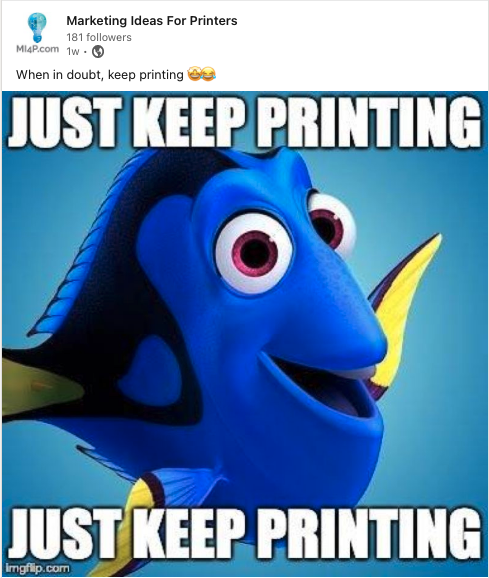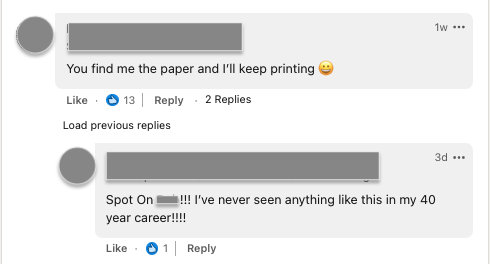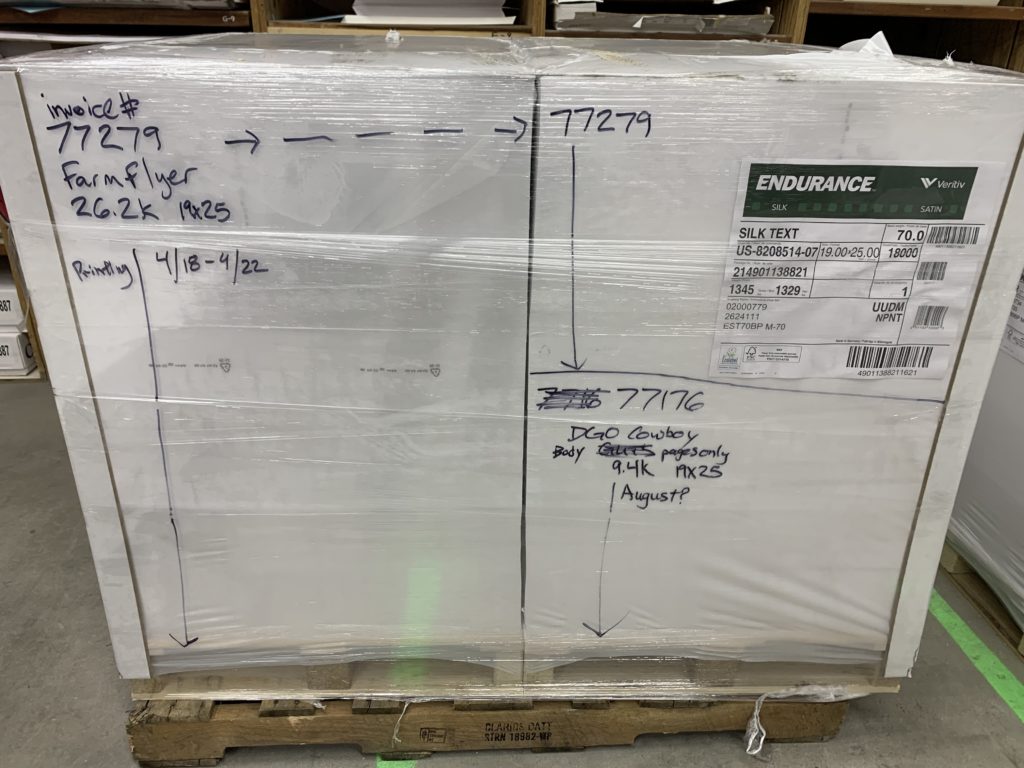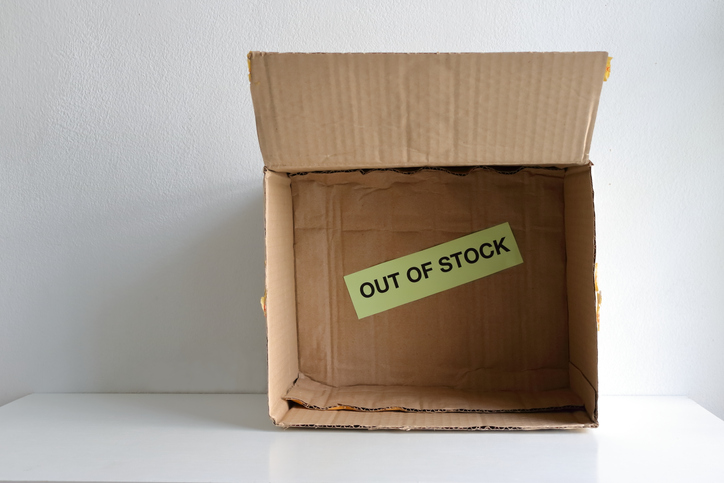It’s no secret that the printing industry has been feeling the increasing effects of the paper shortage crisis.
This pain point has been popping up in conversations on online forums, phone calls and email connections with our printers, and even social media.
Just this past week, we posted the following meme on our LinkedIn channel, and the comments that followed quickly turned to paper and the lack of it.


So, what’s the deal? What do you think is causing this unprecedented paper supply issue? How is it affecting your business, and what are you doing to alleviate the issue for both your business and your clients?
We asked a handful of our subscribers these questions to get their take on things. Check out the helpful information and tips they provided in their responses below.
What is Causing the Paper Shortage Issues?
Some quick research will show you that the paper crisis didn’t just suddenly appear; it’s been a long time coming.
In Lou Caron’s article, “Paper Shortages: What’s Behind the Problem and What Can We Do?”, Caron attributes several factors that have led to the current state of the paper supply, including:
- The closure of North American paper mills and others converting to board stock to gain traction within the packaging industry.
- Printers decreasing their inventory and instead relying on the paper merchants to warehouse and deliver paper “just in time” for their needs.
- And the list goes on: the pandemic causing a feast or famine availability need, shipping ports, logistics and competition, and more.
As Dick Olenych of Spectrum Printing, Home of the Happy Printers in Virginia Beach, Virginia, says, “In the past, so many industries have been focused on lean manufacturing. But ‘just in time’ isn’t cutting it anymore.”
How is the Paper Crisis Affecting Print Companies?
One thing’s for sure: if you’re feeling the effects of the paper shortage crisis at your print company, you’re not alone.
“It used to be we could call up suppliers, and they’d have 80% of what we needed. But now, I’m surprised if they have 10% of the papers I need in stock. We typically have to call two or three suppliers, and all of them are very low on supply,” explains Jeramiah Townsend of Basin Printing in Durango, Colorado.
Gary Chmielewski of Northern Ohio Printing in Cleveland, Ohio, shares a similar experience. “Paper ordering used to be a 20-minute job, and now it’s three hours. We’ve even nicknamed one of our team members ‘The Paper Hunter’ because of how much time and effort it takes to get paper. It’s shown us the importance of being proactive. Now, we stock up to six times as much inventory as we used to, and we offset that cost by having the client by for half of the paper upfront.”
5 Tips for Handling the Paper Crisis
1. Find the good in it.
While it’s easy to point out all of the ‘bad’ and inconvenience the paper shortage is causing, it’s important to find the best in every situation. Dick Olenych was quick to point this out and find some good of his own.
“All of these shortages, including labor, are making me be more proactive and tweak my marketing like never before,” says Dick. “In the past, everyone had paper, but not so today. Now, if you can get paper that others can’t, you’re going to win the opportunities to do that job. You can focus your marketing on what is critically important: turnaround times. Not having to wait for paper has become a huge selling point. We’re able to advertise ‘Order today, print today’ because we’re warehousing so much more paper than before. Sure, we might be paying through the nose, but it’s been a wonderful way to capture clients.”
2. Plan ahead and order in advance.
“If we know a project is coming, we ask customers to order paper now, as soon as possible, and pay for it in advance, so we can have paper on hand for their upcoming projects,” explains Jeramiah Townsend of Basin Printing. “We also take liberty to order paper as soon as possible for all upcoming projects.”
Dick also adds, “We don’t quote specific brands or brightness. We’ll just quote weight and coating. That way, we have some flexibility in how to meet our customers’ requirements.”
3. Know thy inventory.
There was a time when inventory wasn’t that big of a deal. But today? Not so much.
“Having inventory on the floor today is gold. You have to have it. Your customers are going to shop around if you don’t have what they need when they need it,” says Dick.
Jeramiah also monitors his inventory by reserving his house paper stock immediately. “We are keeping a closer eye on current stock instead of just relying on a supply of ‘house stock.’ We mark and set aside all stock paper for specific jobs we know are coming in the future. This ensures we have paper ready for a job PLUS it gives us a visual of what paper is available.”

4. Communication is key.
Keeping everyone on the same page with thorough communication will make vendors and customers more understanding of your situation.
As Jeramiah offers, “Communicate with your customers more. Let them know in advance that the industry is experiencing a paper supply chain issue and that you may have to change paper without notifying them. And ask vendors to keep you updated. We have reached out to all our paper suppliers directly, asking that they let us know when they receive shipments. This helps them to notify us when paper comes in.”
Speaking of paper suppliers…
Did you know the all-new Odyssey 2.0 has the integration capabilities to work directly with paper distributors? Imagine if your MIS solution updated the pricing on your paper stock in real-time with whatever changes the paper suppliers made. MI4P is currently working to establish relationships with paper distributors in the US to actually make this happen! That’s the kind of communication worth talking about!
Want to learn more about Odyssey 2.0? Reach out below if you’d like to connect and see a walk-through of Odyssey 2.0 for yourself.
5. Look for ways to simplify.
Instead of focusing on what you can’t offer, market what you can.
For example, do your current website order forms offer ten paper options (or more) to choose from when you could reduce those options by half (or more)? Look for areas where you can simplify your offerings and eliminate order options that are harder to fulfill at the moment.
As Dick mentioned earlier, “We don’t quote specific brands or brightness. We’ll just quote weight and coating. That way, we have some flexibility in how to meet our customers’ requirements.”
Make it Easy on Yourself.
While paper might be in short supply, the printing industry is still overflowing with a fantastic group of people.
So don’t go it alone!
Get yourself connected and start networking with others in the same trenches as you. You’ll be amazed at what you’ll learn.


